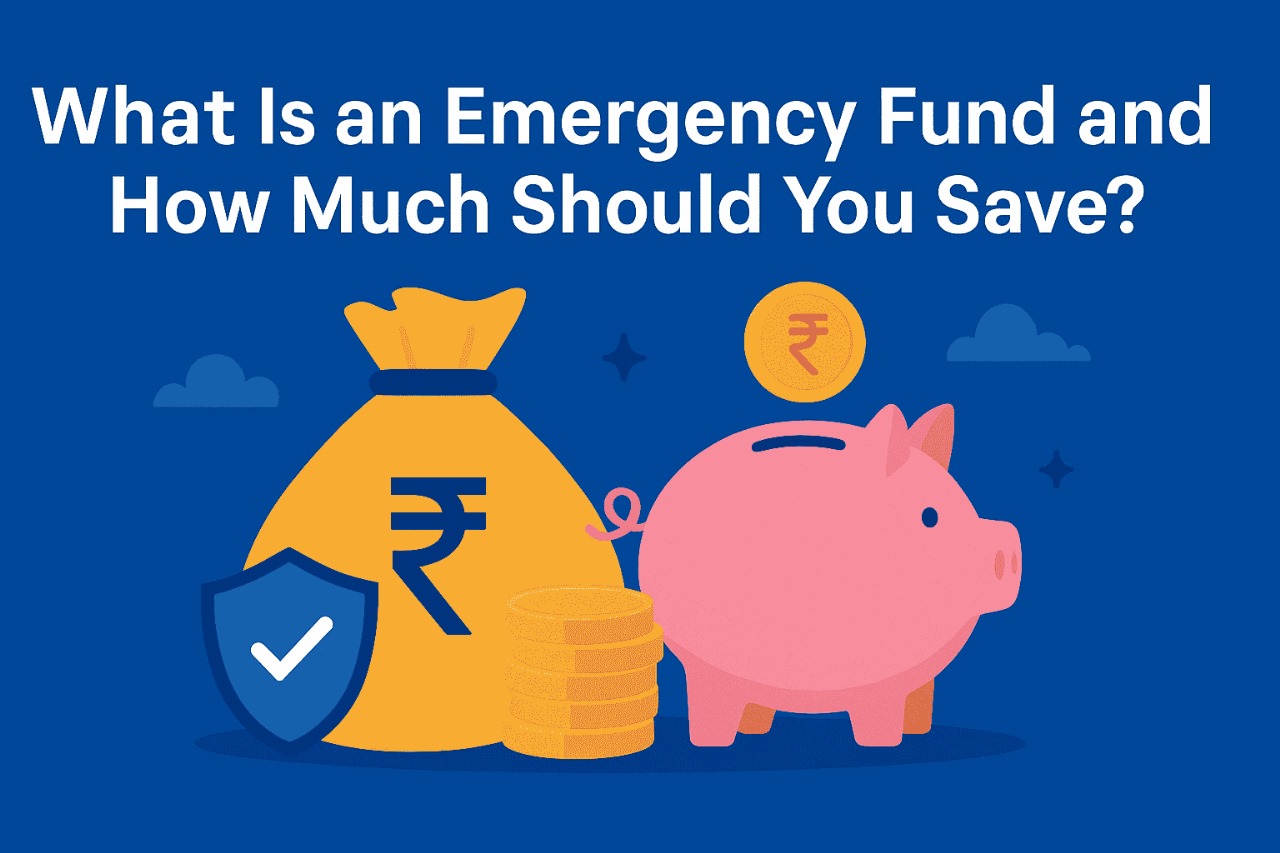An emergency fund is a reserve of liquid, accessible cash meant to protect you during unexpected financial crises, such as medical emergencies, job loss, sudden home or vehicle repairs, or urgent family needs. In a country like India, where social safety nets may be patchy and health insurance penetration is still growing, an emergency fund becomes a true financial lifeline.
Without one, many Indians turn to high-interest credit, BNPL schemes, or informal borrowing, creating cycles of debt. As seen in multiple surveys and reports, the majority of Indian households are vulnerable: they lack the buffer to weather financial shocks. That’s why even modest emergency savings can be life-changing, not just in preserving financial stability, but in maintaining mental peace during turbulence.
Emergency Fund vs. Savings: Key Differences You Must Know
Though often used interchangeably, “savings” and “emergency fund” serve different roles in financial planning:
| Attribute | General Savings | Emergency Fund |
| Purpose | Goals such as vacations, buying assets | Coping with unplanned financial shocks |
| Investment | May be locked in FDs, mutual funds | Must remain liquid and safe |
| Accessibility | Can involve withdrawal penalties | Withdraw anytime without penalties |
| Usage Discipline | Often tapped for planned or impulsive goals | Reserved strictly for genuine emergencies |
India’s household savings have been shrinking; net financial savings dropped to just 5.1% of GDP in FY 23, the lowest in 47 years (Reddit, CNBC TV18). And that’s net of liabilities. With increasing debt burdens—household liabilities hitting around 5.8% of GDP, many households rely on credit instead of cushions. This clearly underscores the importance of treating emergency funds separately from general savings.
In broader personal practice, platforms like Reddit’s India communities report that 75% of households lack any emergency fund at all, and shockingly, some rely on equity or mutual funds meant for emergencies, a risky move in volatile markets (Reddit, Business Standard).
How Much Should You Save in Your Emergency Fund?
🔹 The 3–6 Month Rule
Financial experts generally recommend building an emergency fund that covers three to six months of essential living costs. But Indian realities often call for stricter measures, given income volatility and limited formal insurance coverage.
🔹 Where Indians Stand Today
- A recent study by Stable Money reveals nearly 47% of Indians save less than 10% of their income towards their emergency fund, while only about 23% save more than 30% (Stable Money App).
- Among high-net‑worth individuals (HNIs), 43% save less than 20% of income, and 14% have no emergency fund at all (Stable Money App).
- A YouGov survey highlights that 60% of Indians aged 35–54, who often shoulder responsibilities for children and aging parents, feel their savings won’t be enough for their future, despite having done some financial planning (edelweisslife.in).
🔹 Determining Your Ideal Cushion
- Calculate your monthly indispensable expenses (rent, food, utilities, insurance, EMIs, and essential bills).
- Multiply by 3–6 months to set your base target.
- If your job is seasonal, freelance, or commission‑based, or if you support multiple dependents, aim for 6–9 months or even up to 12 months of expenses.
- Start small: begin with ₹5,000–₹10,000 or a month’s worth of expenses, then gradually ramp up.
- Automate transfers from salary accounts to a separate, high-liquidity account.
- Keep it sacred, never dip into the fund except for real emergencies. This is your financial safety net, not a discretionary resource.
Why These Numbers Matter for Indians
India’s overall household savings are contracting. Savings have slipped from around 7–8% of GDP to just 5.1% in FY 23, while household debt has surged to approximately 5.8% of GDP (Wikipedia, CNBC TV18). In other words, the average Indian family is relying more on credit and saving less, a precarious setup.
Moreover, nearly 40% of affluent Indians lack emergency funds, and across demographics, more than half of salaried individuals express that their current savings are insufficient for tackling future uncertainty (Business Standard).
Putting It All Together: The Indian Emergency Fund Reality
- What it is: A liquid reserve earmarked solely for unexpected financial challenges.
- How it differs: Unlike general savings or investment assets, an emergency fund stays untouched unless absolutely necessary.
- How much to save: A minimum of 3–6 months of living costs, scaling toward 9–12 months depending on job stability, dependents, and personal risk tolerance.
Given that nearly half of Indians save under 10% of their income for emergencies, and many lack any buffer, building even a modest reserve becomes a critical first step toward financial resilience.
Steps to Build Your Emergency Fund in India
- Define your essentials: Calculate fixed monthly outflows.
- Set incremental goals: ₹5K → ₹10K → one month → 3 months → beyond.
- Automate saving: Use auto-debit or set up salary splits.
- Choose safe parking: Keep funds in liquid accounts (e.g., savings, sweep-in FDs, money market instruments).
- Review annually: Adjust your target with changes in income, expenses, and family status.
- Replenish quickly: If you withdraw, treat it like a loan you must pay back first.
Conclusion
In India, where savings are dwindling and debts are rising, an emergency fund isn’t optional; it’s essential. It stands apart from general savings by being liquid, protected, and reserved for crises. While three to six months of expenses is the traditional benchmark, many Indians, especially those with variable incomes or multiple dependents, should aim higher.
With over two-thirds of Indians saving less than 20%, and nearly half under 10%, the gap is real and troubling. Begin with simple, consistent steps, automated transfers into a separate account, monthly targets, and unwavering discipline. In doing so, you build not just money, but long-term financial stability and peace of mind.



